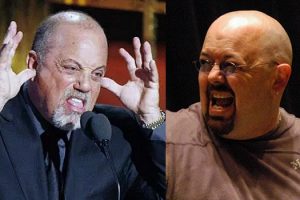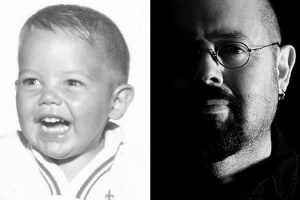Author in Progress
I think my muse wants to kill me. It can’t be contained or put on a schedule. It’s often unpredictable. I know writers who get their best ideas in the shower. Not me. My muse usually shows up when I’m driving in rush hour traffic on Chicago’s Kennedy and Edens expressways. With cars squeezing into my lane and horns honking, I will inevitably think of a new story arc or scene. I know from experience that if I don’t capture the thought in the moment, it disappears. I confess that I’ve quickly typed a note on my phone while driving. Not safe at all, I know. Someone suggested the voice memo feature on my iPhone and now I record my creative ramblings.
On nights when I’m sitting safely in front of my blank computer screen prepared to write, I wait for the muse. Minutes pass. Nothing. At the one-hour mark, I panic when the words that had flowed so effortlessly the day before don’t even trickle. Fearful that my creativity has dried up, my eyes dart around the room looking for something to guide me. Then I think maybe it’s like love and so many other things people say only come to you when you’re not looking for it.
I’m still not sure if you find your muse or if it finds you. All I know is that this muse can be elusive and slippery as hell. Our fanciful, idealist writer side assumes the muse will appear when we’re holed up in some remote cabin with a bubbling brook nearby to lull us into a higher level of consciousness. The glossy ads for writing residencies and retreats reinforce those fantasies. They trick us into thinking the most idyllic locations will inspire us creatively. Maybe they do. But what about those of us who need to fire up the muse on-the-go and on the cheap?
Something as simple as gazing at a ceramic vase or watching the setting sun can inspire the magic of the mind. The problem is I’m not still long enough to let that happen. The calm and quiet of reflection feel like a luxury of privilege to me at times. In today’s America, I stay in a constant state of rage. For those who engage in a spiritual practice, you know that you often have to be still to hear the voice of God or whatever higher being you summon. Lore tells me that muses work the same way. Or do they? When the world is ablaze, can we find our creative center? Or is that too woo-woo to be real?
Read MoreI’ve been having insomnia again. I don’t know if it’s an integral part of a creative life, or the consequence of too much stress, but I know that this is a problem shared by many writers.
With me, it’s not just a matter of not being able to sleep, it’s a matter of not being able to direct my mind away from specific worries, whether immediate or distant, specific or abstract. Those thoughts become loops, spinning around the same problem, without resolution.
One night recently, I got sick of worrying about the state of the world, and managed to refocus the thought loop onto analyzing the problem of insomnia itself. Why wasn’t I sleeping? What was I thinking about? What was it that kept my mind churning when it needed to rest? Were they things beyond or within my control? Were they all the same? Were they about the past? The present? The future?
Then, of course, I did what writers who are stuck in a manuscript that has flat and bare spots do with everything—I turned it into a question about my story problems.
I asked myself what would keep my characters awake at night? What would their 3 am thought loops be? That line of questioning proved to be a novel and fruitful strategy for resolving the flat and bare spots in my story.
For me, the insomnia-fueled thought loops start with a focus on specific problems for which there is no clear or immediate solution (leaking pipes; tensions with the teenager; job insecurity). Those specific problems tend to fall into a few, emotionally resonant categories: things I wish I had or hadn’t done or things I wish weren’t happening in the larger world or in my small portion of it. There is obviously regret involved in these thought loops. There is also frustration, a feeling of helplessness in my own lack of action on or ability to influence problems.
The insomniac in me, however, turns those problems into small kernels at the center of spiraling worry loops which progressively churn in memories of related past traumas or fears of future catastrophes. This incorporation of traumatic backstory and future fears encapsulates a current (and initially soluble) difficulty in layers and layers of insoluble worry.
That layering of thought was also a gold mine of understanding who I was–not just in the moment, but in my past, and in the future. The layers of worry laid bare the things from my past that still bothered me; unwanted behaviors that I still had not purged; events that I had still not accepted; fears and weaknesses that I had not conquered. It showed the worst of me, not just the parts that I liked to shine up and present in the light of day.
What if my characters had insomnia? What current moment would be the one that woke them up and occupied their thoughts? What kind of regrets and frustrations would tinge that current moment? What could I learn from them about how they thought about themselves? How would that impact their actions in the daytime?
Read MoreIf you’re already a published author, you may not want to do this. It can be painful. Since my novel isn’t published yet, I can do it for you. When my author friends read their Goodreads and Amazon reviews, they often do it with one eye open. Some give up after their first one-star reviews.
Some of the bad reviews from readers will say DNF as in “did not finish.” This is about as crushing as seeing NSF on your bank statement after you’ve bounced a check. Yet there are people who force a bad book down like cold medicine. As if it’s a test of character to endure every book they begin.
Still, we know that every bad review doesn’t equate to a bad book. Maybe the reader was ticked off standing in the 15 items or less line at the grocery store behind someone with 16 items in the cart. When I peruse reviews, I find a more likely answer as to why people dismiss certain books. Bias that has nothing to do with storytelling or literary merit can sink a reader’s assessment of a book fast. For example, they’re pro-life and one of the characters had an abortion, so they abhor the book. That’s an actual critique I saw once on Goodreads. Not a helpful review.
I’ll put my critique partner and beta readers up against yours any day. They are literary luminaries in my admittedly biased estimation. Still, when I’m in revision mode, I turn to book reviews to understand what keeps readers turning pages and reading a novel when they could be doing a million other things. I pore over the reviews for books I’ve read so I can go back to the text and understand why the reader stayed engaged or slogged through or just stopped reading. I wade through poor reviews look for recurring themes and issues raised by multiple people. A silly, errant thought occurred to me: If I can avoid all the things readers hate, they’ll love my book. Okay, maybe not, but I’ve found some valuable nuggets and some doozies, too, in the cavern of comments.
Lack of emotion and poor character development can flatten a book.
Reviewers often say, “I didn’t understand the character’s motivation.” We’ve all heard that the stakes in the story must be clear, urgent, and high. This matters to readers. Even more importantly, they want to connect with the characters and feel something. Often, they point out that highly stylized, experimental writing and story structure can work well, but not if it keeps the reader at a distance, sacrificing emotional intimacy with the characters. Another problem stemmed from characters not growing or transforming over the course of the book.
Read MoreIn the course of my lengthy career as a professional musician, I’ve been fortunate enough to meet – and sometimes perform with – a number of rock stars and celebrities. Most of them have been wonderful to work with. Some of them, significantly less wonderful.
And then there’s Billy Joel. He and I… well, let’s just say that we are not currently on speaking terms.* Not after what he said.
I mean, I can forgive a lot, but not that.
Admittedly, it was a long time ago. 1977, to be precise. But Billy has never taken back what he said – hell, he’s probably said it a thousand times since then. I swear, there’s no apologies with this guy. Not even a hint of remorse. And in my defense, I like to think I’m pretty open-minded and accommodating. But some rifts are just insoluble. Some lines just shouldn’t be crossed.
That’s what happened with Billy. The guy crossed a line with me, and there’s just no going back. Not after he said this:
“I don’t want clever conversation.”
Here’s the thing. As a writer – and as a reader – I DO want clever conversation. In life. In relationships. And especially when it comes to dialogue in fiction.
So today’s rant – er, today’s post, that is – will focus on how to make the conversations your fictional characters have more effective, more engaging, more memorable – in short, more clever.
What’s the big deal with dialogue?
To me, dialogue is the single most powerful way to bring your characters to life. As author, editor and all-around writing guru Sol Stein says in his excellent book How to Grow a Novel, “The minute characters talk, the reader sees them. And we know readers much prefer seeing what’s happening rather than hearing about it through narration.” Stein also points out an additional benefit: “Not to be lightly dismissed are those white spaces on the page created by exchanges of dialogue. They make the reader feel the story is moving fast.”
Dialogue opens up a window for the reader into how a character thinks, how she perceives herself, how she views the world, and often, how she wants the world to view her. As Stephen King observes in his classic On Writing: “What people say often conveys their character to others in ways of which they – the speakers – are completely unaware.”
In addition to providing us a clearer view of a character, dialogue can often leave a lasting impression that is far more powerful than most passages of narrative or description. I often use movies as examples in my WU posts, since more people will be familiar with them, so to help drive home how powerful – and how memorable – good dialogue can be, see if any of these lines ring a bell:
Read MoreWhen Erin Bartels and I agreed to be critique partners, we knew we had similar writing sensibilities and a commitment to telling emotionally resonant stories. Interestingly, both of our debut novels explore race in America. However, as much as we are alike, we approach the world and our characters from vastly different perspectives: She’s white. I’m black.
Erin’s novel, We Hope for Better Things, which releases in January, received a starred review from Publishers Weekly. It takes a compelling journey through the intertwined lives of three women—from the volatile streets of 1960s Detroit to the Underground Railroad during the Civil War—to uncover the past, confront the seeds of hatred, and discover where love goes to hide.
I’m revising my first novel, The Kindest Lie, which tells the story of a black woman engineer trying to reconnect with her biological son. She befriends a poor, 11-year-old white boy. Their mutual need for family collides in one fateful night, exposing the fault lines of race and class in a dying Indiana factory town.
In anticipation of the release of Erin’s debut, we talked about the critique process and how we navigated the weighty, and often uncomfortable, topic of race as we provided our feedback.
Nancy Johnson: I had this huge fear all along about how I would tackle my predominantly black cast of characters. You may think that’s absurd since I’m black. But that’s the thing. I desperately wanted to represent the best of my community since we’re often perceived negatively in literature and media. Then I began to worry that I was over-correcting and villainizing my white characters. You flagged my blind spot on how I portrayed white parents.
Erin Bartels: Yes, I did notice when I read that, while black parents in your book were portrayed as fully three-dimensional, with both good qualities and bad, there really didn’t seem to be any “good” white parents. They were neglectful, inept, or abusive and seemed disinterested in their kids. I flagged it more as an observation than a critique. There are a lot of bad parents out there. But I think what I liked about your black parents was that even if at first Mama seemed harsh toward Ruth, as I read I could see why; I could see where she was coming from and how she thought that it was the best thing to do at the time. She was understandable to the reader.
I think it’s natural for us to make those characters we feel we know better more three-dimensional. One of the things I worried about in We Hope for Better Things was that some of my black characters would feel two-dimensional, that they would seem like they were only there to serve the storyline I had set up. Especially characters in the most historical of my three storylines, the 1860s. I just have zero real idea what life was like for them and research can only take you so far.
And though I’d had three black friends read the book before you did, I was worried that they weren’t saying everything that was on their minds as they read it. You mentioned that you struggled to know what to say and what not to say in your critique.
NJ: Yes! As I was writing my critique notes […]
Read MoreUm, I don’t think this is the kind of bucket they’re talking about…
I believe it’s healthy to have goals. After all, having something to aim for can give us a sense of purpose, and can help us keep our efforts focused. We often hear of “the writer’s journey,” and I think it’s an apt metaphor, because this can turn into a VERY long trip. For those who manage to stay on the path, there are many milestones along the way – along with many hurdles.
While a writer might start out with a single goal (e.g., write the damn book), if that writer is serious about getting published, she might soon find herself adding multiple items to her to-do list. Armed with this list, off she goes on her journey!
And then, reality sets in.
For most – if not all – of us, it soon becomes apparent that this whole writing-and-publishing-a-book thing can take a while. Sometimes quite a while. Given how long it can take to get a writing career off the ground, a writer’s to-do list can start to resemble another list that has become popular in recent years: the “bucket list.”
Note: For those not familiar with the idiom, this is a list of things you want to accomplish before you kick the bucket. (And for those of you not familiar with what “kick the bucket” means, it’s a reference to an ancient – and anatomically challenging – romantic ritual involving a large bucket, three pairs of oversized steel-toed boots, 12 gallons of tapioca pudding, and 23 well-trained riverdancers, preferably double-jointed. Honest.)
For today’s post, I’ve attempted to assemble a typical bucket list for an aspiring writer, based on a combination of my own initial plans, accomplishments to date, and ongoing goals. As my journey has progressed, the items on this list have tended to shift and evolve – if you ask me next week, my list might look quite different. But for today at least, here’s my first stab at a bucket list for writers:
1. Finishing your manuscript
This is huge. Seriously, this could be the only item on your list, and it would still be a MAJOR accomplishment. By completing a manuscript, you’ve done something 99.999999% of the population hasn’t done.
Even more impressive, you’ve done something that probably 98% of the people who ever said “I should write a book” have never gotten around to actually doing. So if you have done it, you should congratulate yourself on a significant accomplishment, and celebrate it in whatever way you see fit. (Caveat: you might want to avoid celebratory activities that require a large bucket, three pairs of oversized steel-toed boots, 12 gallons of tapioca pudding, and 23 well-trained riverdancers – even if they’re double-jointed. I’m just looking out for your safety here.)
2. Signing with an agent
Okay, if you’re self-publishing, this won’t be on your list. But since I started my journey back when stone tablets were still more common than e-books, this represented a well-established rite of passage that I was eager and determined to complete.
Read MoreOver the past week, I’ve struggled to write. I’ve struggled to do many of the things that typically bring me joy or at least make me feel remotely content. Sleep has been elusive. These are difficult times for our country. We’re living in a moment when our democracy demands our attention, stirring our passions, forcing us to decide who and what we believe. It gnaws at our consciousness even as we may try to ignore it. We can’t turn away. And we shouldn’t. As citizens and especially as writers, we must engage.
I agonized over writing this post thinking that taking space here to address this topic may be labeled inappropriate. I might be subverting the unwritten writer code that we can’t risk being perceived as polarizing. Some would assert that this forum for writers is not the place for anything remotely political. They may be right, but I believe that silence is also political.
We often look to fiction as a means to escape the inescapable. Every summer, publishers promote the pastel covers of our favorite beach reads and many of us curl up with them well into fall and winter to cocoon ourselves in the warmth of stories we hope will have happy endings. Alternately, some of us read dystopian novels where humanity scrambles for survival in a dark, nightmarish world. We cloak ourselves in the illusion that dystopia is far-off and unimaginable to make our current reality more bearable. Unfortunately, we’re living the cautionary tale we fear.
When I talk to my friends in writing organizations, we often lament about how helpless we feel in this time when objective truth is pilloried, marginalized people are re-victimized, and hard-won rights are in danger of being stripped away. Our hand-wringing remains constant.
Now is not the time to stop writing or to write only to help our readers and ourselves escape reality. We can use our writing to fight our way out of what scares and overwhelms us. Some have labeled this “writing as resistance.” Yes, I want to resist injustice and intolerance, but I also want to foster understanding and build empathy. I’m not advocating that we write novels that promote a partisan stance. That’s didactic propaganda that keeps us kicking and screaming from our ideological corners. The best fiction remains a place where we can immerse ourselves in the world of characters who grapple with systems of oppression, demand agency, and struggle to make sense out of a complex world. It’s still all about story first.
As writers, we’re equipped for battle with our laptops and smartphones, or typewriters and pens, and access to Wi-Fi practically anywhere we go. Our bunkers may be our home offices, subway trains, or coffee shops. Our greatest weapon is
Read MoreHave you ever felt stuck in your isolation as a writer or mired in the world of your story? For months, I revised my novel and tried to turn it into the best version of itself but something was missing. I hadn’t explored the fullness and complexity of what it meant to be a writer in the world today.
I knew it. I felt it. Still, I couldn’t unlock what was missing in my story or in me as a writer.
Sometimes, you just have to switch things up and risk everything to engage with a new community of writers. The day I arrived on the campus of Reed College in Portland, Oregon to study at the Tin House Summer Workshop, I gawked at literary luminaries like Lauren Groff, Alexander Chee, and Benjamin Percy.
You don’t belong here with real writers. Many of these writers have MFAs and book deals; you don’t. This isn’t for you.
Self-sabotage is real. If I told myself enough times that I wasn’t worthy and didn’t deserve to be in that writing space, I would eventually believe it and inoculate myself from tough critique and defeat. My workshop leader for the week was Tayari Jones, whose bestselling novel An American Marriage was the Oprah Book Club pick. Imposter syndrome stalked me in the classroom. It’s hard to learn in workshop when you’re fangirling but by mid-week I’d settled in enough to soak up her wisdom.
Tin House Summer Workshop
Tayari’s advice will forever transform the way I tell stories. She taught me that conflict isn’t borne of hostility, that too much estrangement and anger strangles narrative. Our workshop inspired me to soften the mean mama in my novel and bring the temperature down on my protagonist who “yanked curtains” and “snatched silverware.” Tayari said, “We learn to connect with characters by seeing them connect. You want to make all your characters feel like they’re right, like they have a legitimate point.”
Lectures from the most unapologetic badass authors I’ve ever met buoyed my spirit and girded me for the fight we’re all in to make our voices and stories heard. Memoirist Kiese Laymon talked about being the victim of childhood sexual abuse and the secrets and lies we tell in our nonfiction narratives in hopes that readers will forgive us for the hurt we’ve inflicted upon others. “In our intent to write honestly, sometimes we write other people’s trauma out of our stories,” he said. If Kiese could courageously tell his truth, I could at least own the space I had earned as a writer at Tin House.
Read MoreThis book gave me “all the feels.”
We all strive to write the quintessential delivery system for “feels,” whether we know it or not, whether we’re consciously striving to deliver, or not. We do this because that’s what drives us to tell stories in the first place. Somewhere along the line—whether it was Vonnegut or Brontë, Irving or Rowling—we all read something that touched a chord and made us say, “Ah. Yes. I’ve been there.”
Or maybe we were too busy blowing our noses to get those actual words out, but you get the idea.
So what can you as a writer do to elicit more empathic reactions from your readers than detached ones? Writing emotional scenes has less to do with the scene itself and more to do with tapping into universal experiences and the emotions that go with them. Not many people (if any at all) will have experienced the exact scene you are writing and be able to connect to it. But all people have experienced some sort of loss, triumph, grief, disappointment, or love.
Empathy creates a bond. When you as the writer find your empathy for the character, chances are you will create an empathetic bond between your reader and the character, as well. Therefore, if you find yourself in a scene that is so much bigger (emotionally) in your head than it is coming out on the page, take a step back. Identify the emotion you are going for, then recall the last time you felt that way yourself.
Easy, right?
Confession time. I talk the big talk. Walking it is a whole lot harder. I come from a long line of stiff-upper-lipped Scandinavians who settled in the Midwest. Stoicism is a virtue; “not too bad,” is high praise. My natural reaction to writing an emotional scene is to pull back. Getting in there and feeling right along with my character seems very rude and more than a tad voyeuristic. Good manners tells me to fade the scene to black. But I know in my phlegmatic Midwestern heart, that this won’t do for storytelling. So I make a list.
Read MoreThe author before and after learning how to use a semicolon
I get approached from time to time by aspiring new writers, asking for advice on how to get started. The longer I’ve been doing this, the harder it gets to answer them. At this point I’ve been in the game nearly 20 years, so how do I condense what I’ve learned into a quick conversation or a brief email? And what if they are interested in a completely different type of writing than the kind that has made me as rich and famous as I currently am? (Hmmm – now that I think about it, that wouldn’t necessarily be a bad thing. But I digress…)
So how to advise them? Do I lecture them on the ever-changing industry? Warn them of the dangers of reading the works of Clive Cussler? Or simply hand them a dog-eared copy of The Elements of Style and turn around and run? Depending on who asks, it’s hard to determine which advice would be the most useful.
When in doubt, fire up the time machine!
I’ve been binge-watching the old Stargate SG-1 TV series recently, and several of the stories focus on time travel, a concept that has always fascinated me. In a couple of episodes, the main characters manage to pass messages to versions of themselves who are living in a different time.
This got me to thinking: what kind of messages would Current-Day Keith send to Past Keith?
After considering obvious nuggets like “buy stock in Amazon” and “don’t enroll in Trump University,” I started thinking about what I would tell Keith The Writer From The Past (or, KTWFTP). Since SG-1 episodes usually incorporate a ticking clock or some other increasingly urgent complications, I decided to ramp up the pressure, and limit myself to five pieces of advice. Here’s what I came up with to share with the younger (and yes, hairier) Keith.
1. Know your genre – and its conventions.
Probably the biggest – and hardest – lesson I’ve learned as a writer is that genre matters. Historically the genre of a book just wasn’t something I thought or cared about – as a reader or as a writer. But after writing one hard-to-categorize manuscript after another, the first message I would pass on to KTWFTP is to pick a damn genre already. It will make things SO much simpler.
Why? Genre simplifies things by setting expectations. It helps an agent sell your book. It helps a publisher market your book. It helps a reader choose your book.
And if you’re self-publishing, it helps YOU market your book, which is utterly crucial. In an era when anybody can publish anything, you need a way to make your book stand out to your potential readers.
Read MoreImage – iStockphoto: Katharina 13
Writers, among some of the most solitary workers in the world, can find growing support and services in a newly redirected Authors Guild that favors the majority, not the few.
Writing Alone, Working Together
To quote the immortal Alistair Cooke on Masterpiece Theatre, “Last time, as you’ll remember …” I was going on here about author advocacy. In the comments that followed, I discovered that everyone isn’t up to date on the Authors Guild, which is the States’ leading author advocacy organization, in business since 1912.
In the month since my last column here, in fact, the guild has made a series of moves that help define its developing role in the writer community and so this is a good time to back up and do a bit of groundwork on what the guild is, how it has changed since the start of 2015, and why authors may want to consider joining the 10,000 or so members already in place.
I’ll bullet out some talking points:
While you can see the organization’s member benefits laid out for yourself, here, I’ve chosen these recent points because they give you a look at the guild’s quickly developing proactive stance in six important areas:
As a point of disclosure, I’m not a member of the guild because I report on the guild’s work frequently as a journalist and have followed and commented on its changes and development since 2014. And my message today is more recommendation than provocation. If you don’t know the Authors Guild and its work–or if you have ideas about it that you haven’t revisited in some time–this is […]
Read MoreAs a little girl before my feet touched the floor in Chicago orchestra seats, I fell in love with Gershwin’s “Porgy and Bess,” that jazzy rhythmic music that was classical and southern and black all at the same time. I didn’t just hear it. I felt it.
With the birth of hip hop, I grew up listening to Chuck D and A Tribe Called Quest drop rhymes on the turntable. In my bedroom, I tried to mimic what I’d heard but my raps fell flat, and the jerky, awkward movement I passed off as dancing lacked rhythm.
Still, I must have absorbed rhythm because now when I read literature and write it, I recognize poetry, lyricism, and music in prose. When I sit at my keyboard to pen a novel, sometimes it’s a deliberate, painstaking process to create that rhythm on the page and other times, it flows as if it’s always been inside me.
The watercooler conversation on my job turned to books one day recently and my colleagues tried to recite the opening lines of their favorite books. Most struggled and failed to remember any but for one woman the words flowed like music. It was the opening of Vladimir Nabokov’s Lolita:
Lolita, light of my life, fire of my loins. My sin, my soul.
Not only do those words capture the disturbing essence of this character’s tortured and forbidden obsession, but they roll across your tongue like water. I’m convinced that’s what made the opening memorable for my colleague. In the next line, Nabokov breaks down this girl’s name into the rhythm of its syllables.
Lo-Lee-Ta: the tip of the tongue taking a trip of three steps down the palate to tap, at three, on the teeth. Lo. Lee. Ta.
When I introduced four historic names off the top of my novel-in-progress, I played with their arrangement and read them aloud over and over again until the rhythm sounded and felt right.
I knew the ancestors were dancing somewhere, this night a love note to Harriet and Sojourner, W.E.B. and Booker T.
Jacqueline Woodson, one of my favorite authors, says she rewrites everything until she gets the rhythm and story right on the page. She tells her life story in Brown Girl Dreaming, a memoir of poems. Her mastery of that form influences her handling of prose in the novel Another Brooklyn, where there’s a cadence, a steady beat running as a current along the narrative. Here, the protagonist, August, and her brother watch life below their window.
The people passing beneath us were all beautiful in some way.
Beautifully thin. Beautifully obese. Beautifully Afroed or cornrowed or bald.
Beautifully dressed in bright African dashikis and bellbottom jeans, miniskirts and halters.
The words we string together and the way they bend into each other to make sentences reveal patterns and convey meaning. The rhythm and flow of this sentence in Ann Patchett’s Bel Canto leaves me breathless as the action intensifies.
Roxane saw them as the man with the gun saw them, Carmen saw Cesar, and Mr. Hosokawa saw Carmen and he scooped her from the space in front of him, the force of his arm hitting the side of her waist like a blow.
That’s a long sentence punctuated by only one comma and with the insistent […]
Read MoreOur social media feeds are cluttered with the significant yet chaotic issues of the day. Either we’re resisting or resisting the resistance. I’ve engaged in a war of words on occasion via Facebook and Twitter, trying to convince someone I can’t recall ever meeting in real life to consider my point of view. Did we meet at a writing conference or in fourth grade? When we want to be part of the larger conversation and extend our voices beyond 280 characters, many of us turn to the power of our prose.
Writing an issues book feels like the world’s on fire and we’re trying to snuff out the flames with a garden hose. Our stories and characters seem too small to carry such big topics. But they aren’t.
No one is looking for a didactic text or a sermon or an edict from on high. We want to understand the heart of these charged issues through human experience. That’s where we come in as storytellers.
I can’t stop raving about An American Marriage by Tayari Jones because that novel tackles the lasting ramifications of wrongful incarceration on families without preaching to the reader. In media interviews, Jones explains that she received a fellowship at the Radcliffe Institute at Harvard University to study this weighty topic. However, she got nervous when she didn’t have much to show after a year of research. Soon, she realized that the best way to tell this story was not with statistics and data points but through the lens of one marriage.
At the start of Roy and Celestial’s young marriage, he’s imprisoned for a crime he didn’t commit. He asks the ultimate question of his wife: Will she wait more than a decade for him, for his release? In letters they write to each other during his time behind bars, they say:
“Dear Celestial, I am innocent.”
“Dear Roy, I am innocent, too.”
At its heart, this is a love story. At its heart, this is also a human story about impossible choices and the devastating impact of wrongful incarceration.
To tell the story of war is not to write about nukes and napalm. Every war has its people and their stories, as the author Tim O’Brien discovered when he served in the Vietnam War. I read The Things They Carried often just to immerse myself in the rhythm of the language he uses. That collection of linked stories makes you feel but doesn’t tell you what to feel about the Vietnam War. There’s no running tally of battles and body counts or discussion of whether the conflict was justified. Instead, O’Brien writes about a world where there are no winners and no one is right or wrong. They just are.
He writes about First Lieutenant Jimmy Cross and the letters he carried from a college girl named Martha.
In the late afternoon after a day’s march, he would dig his foxhole, wash his hands under a canteen, unwrap the letters, hold them with the tips of his fingers, and spend the last hour of light pretending.
Grief, love, and terror have faces through O’Brien’s stories. We understand war as much as we ever can through these soldiers and the things they carried like rifles […]
Read MorePlease welcome Nancy Johnson back to WU today, this time as our newest WU contributor! We’re thrilled to have her with us!
Race has colored every part of my life from the stories my parents told from the front lines of the Civil Rights Movement to my own experience of being called the n-word by a white coworker. During the years it took me to conceive my novel and write it, I encountered the stories of countless black boys and men murdered nationwide at the hands of white police officers and in my city of Chicago at the hands of people who looked like them in their own communities. There were also the stories of the disenfranchised white working class that felt left behind struggling to grasp a new foothold in America. All of these stories informed my understanding of the world and the question of my novel.
The complexities of race and class loomed above me gray and amorphous like a storm cloud and I wrestled with these issues that offered no easy answers. I thought about what I really wanted to know. What was the question that kept me up at night?
Is what connects us in our common humanity more powerful than forces of race and class that divide us?
Over the years I’ve often heard the advice to write what you know. Many of the characters in my novel are composites of relatives, friends, ladies from the beauty shop, the guys who gather to swap stories at my local Starbucks, and of course, me. However, the larger story is all about interrogating what I don’t know through the lives of my characters.
When I worked as a journalist, one of the most important storytelling lessons I learned was to tell the larger story through the narrow prism of one person, one family, or one community. I couldn’t easily get my arms around the socio-political behemoths of race and class. However, I could relate to Ruth, a black engineer trying to connect with the son she abandoned at birth. A woman isolated by her own mother and brother when she left them behind in a dying factory town to pursue her ambitions. I found myself drawn to Midnight, a smart, mischievous eleven-year-old white boy with a dead mother, a sick grandmother, and a father who recently lost his job at the plant.
The lives of Ruth and Midnight intersect in The Kindest Lie, my novel about two people from vastly different backgrounds with a common need for family, belonging, and home. I chose them to bring my story question to life, to put flesh on the bones of my understanding. Throughout my writing of the book, I asked even more questions of these characters: Are we always tethered to our pasts, to the people and places that birthed us? Is mothering innate or learned? How does toxic masculinity transcend race? What are the perceptions we hold about our own race and class status that we hide from the world for fear of judgment? Do our mistakes define us or can we rewrite our own stories?
As I wrote each scene, I returned to my primary question and the secondary ones to make sure every scene addressed them. I tried to […]
Read More




















